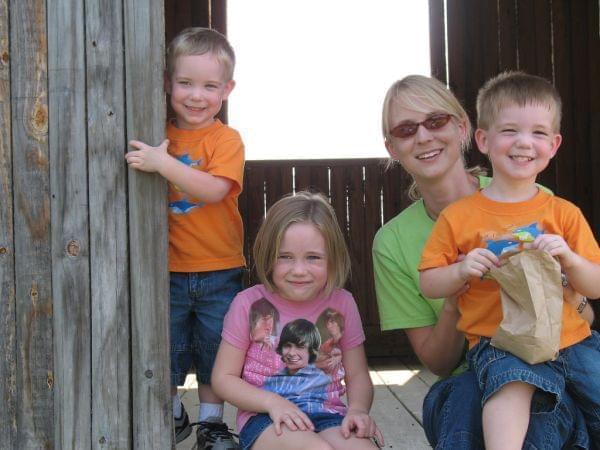Let’s Be Happy!

Margaret McMullen 2007
I don’t know about you, but this has been a week filled with emotional highs and lows for me! In one week, we had a presidential election, we made it through all the very opinionated social media posts, I had diversity training at work, I visited the Stax Museum in Memphis, Tennessee, and one of my closest friends got married! I think I felt every emotion possible in one weeks’ time! As I started thinking about my feelings this past week, I couldn’t help but to think about how my children must have been feeling as well. I believe that we sometimes forget that things have an impact on our children just like they do us. Sometimes that impact can be even greater than it is on us as adults. So my goal for this week is to try and focus on being happy and displaying a positive attitude for my children.
Marguerite Lamb from Parents Magazine gave us some advice on how to keep our children happy. In her article, she talks about “seven strategies that will strengthen your child’s capacity to experience joy.” It is interesting because she specifically talks about how we as adults “can’t control their happiness,” but she mentions that we must work on our own happiness because “children absorb everything from us.” She discusses the importance of us taking time for ourselves and our relationships. As parents we should aim to maintain a level of happiness so that our children will do the same. These tips can be an added asset to keeping our children happy and hopefully they will grow into more well-rounded young adults.
Helping our children understand happiness is not always easy. Some children may associate happiness with materialistic things. Loop Scoops has a great video that teaches a lesson about what makes kids happy. This video shows kids that the more stuff you have doesn’t always make you happier. In a PBS NewsHour episode from June 2014, happiness for some troubled teens is linked to a program that helps them write poetry. Harvard University Graduate School of Education shared an article about a study that was done that says there is a link between a child’s happiness and their academic success. These are just a few sources that help us understand why being happy in life in so important.
So what can we do to help create a happy environment in our homes or classrooms? For starters, just have open, positive, friendly dialogue. No one loves to talk and share more than children. We can ask them about their day, what made them happy today, and if anything upset them. This creates that open communication and relationship building that Lamb mentioned in her article. We can play games, have toy time, write, read some stories, color, do some arts and crafts, go to a park, or simply take a walk. Nothing is more fun in the fall than to rake a big pile of leaves and jump right into them! The important thing is that we remember to take time to do it together. It is good to keep a few books on hand that focus on Happiness and Joy. Once we’ve given some time to our little ones, remember to take some time for yourselves as well. Find what you need to unwind and center yourself.
There is a Swahili proverb that says, “Patience attracts happiness; it brings near that which is far.” I share this to say, not every day will be overflowing with happiness. Sometimes it takes time to develop or to get to a place where you find true happiness. Some days will be good, and some days will be bad. The important thing is that we remember that tomorrow is a new day; and how we feel and what we display will pour into our families and the people around us. Wishing everyone a positive week this week!
